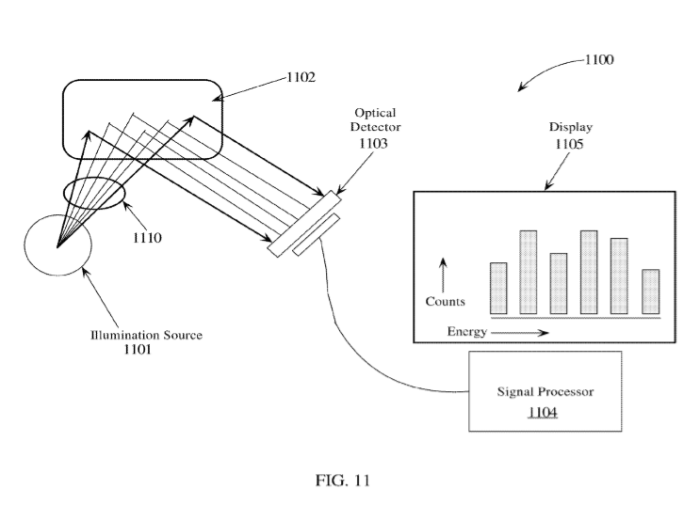This week has seen the launch of the new one pound coin which is said to be a lot more difficult to counterfeit, making it the most secure coin in the world. I was interested to see what technology the Royal Mint might be using and if they have revealed it in any recent patents. It is always possible that they have kept some of the security measures as trade secrets but sure enough there is a rather large patent family emerging with a priority date in 2010. These patent applications are now starting to be granted and the most recent is US9567688 granted on 14th February 2017. Here is a summary:
US9567688: Metallic materials with embedded luminescent particles Inventors: CONROY JEFFREY L [US]; FORSHEE PHILIP B [US]; SHEARER JAMES A [US] Applicant: THE ROYAL MINT LTD [GB] Abstract: Formation of an authentication element by deposition of a metal layer with embedded particles on a metal substrate, wherein the embedded particles are configured to convert energy from one wavelength to another. The embedded particles may be upconverters, downconverters, or phosphorescent phosphors, which can be detected and measured with analytical equipment when deposited in the metal layer. A metal substrate may include coinage.
The patent describes how the metal layers in the coin can be embedded with luminescent particles that under appropriate illumination can be made to emit light of a different wavelength and thereby reveal the authenticity of the coin. The process for embedding the particles is by electroplating so that the metal salts become bonded to the metal. The plated metal layers are preferably uniformly distributed with the particles. For the security features this required a new method of electroplating to avoid the problems caused by the denser nature of the luminescent particles that tended to make them settle on the bottom of the plating bath. Details of how this was overcome are given in the method.
Detecting the particles is also discussed, the figure 11 below is taken from the patent and the description is taken from the main body of the patent.
FIG. 11 illustrates an example of an authentication system and process 1100 in accordance with embodiments of the present invention. An illumination source 1101 emits a wavelength(s) of energy (e.g., light) 1110 at a metal substrate 1102 with one or more layers having the aforementioned particle(s) (or any other luminescent particles disclosed herein or their equivalents), which then emit energy at a wavelength as detected by an optical detector 1103. The particles may be configured to emit one or more desired wavelengths of energy, which may be at a different wavelength(s) as the excitation energy. A signal processor 1104, and optional display 1105, may be utilized for analyzing the detected signals and for making an authentication determination.

Phil’s Comments
While this patent does not reveal the full details of the new £1 coin it is my guess that some of this technology has gone into the manufacturing process for the coins. The new £1 coin is bi-metallic – a gold-coloured ring around a silvery core. It is 12-sided, with grooves on every other side, and includes micro-lettering on an inner rim which reflects the year of production. Other detailed surface features include a panel under the Queen’s head which displays either a pound symbol or a “1” digit depending on the angle of view. The luminescent particles, if present, will mean that the coin will glow in UV light or may emit IR light that can not be detected by eye. This would certainly enable the coins to be rapidly authenticated electronically as has been suggested by the Royal Mint. I’ve not seen one of these coins yet but do let me know if you have one and can detect any of these features.